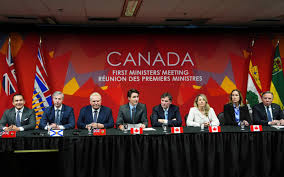Returning to the White House for a second presidency, United States (U.S.) President Donald J. Trump has implemented multiple tariffs on imported goods. Ranging from universal tariffs on foreign goods to ones aimed at specific sectors.
A tariff is “a tax imposed by one country on the goods and services imported from another country to influence it, raise revenues or protect competitive advantages.” Because of this, according to Investopedia, there are some unintended side effects to tariffs, such as reducing competition, pushing up prices, generating international tensions leading to and potentially causing trade wars.
Currently, President Trump’s current administration has opted for the use of reciprocal tariffs to. A reciprocal tariff is one in which the U.S. will match import duties levied by other countries. For example, if another country, say Sweden, taxed paper clips made in the U.S. at a rate of 20 percent, the U.S will impose the same tax on Sweden’s paper clips.
After announcing plans for reciprocal tariffs in mid-February, the federal government seeks to ensure fairness in trade relations internationally. This was done through the “Fair and Reciprocal Plan,” a federal announcement “ordering the development of a comprehensive plan for restoring fairness in U.S. trade relationships and countering non-reciprocal trading arrangement[s].” One of the major claims in the statement was that the “lack of reciprocity is unfair and contributes to our large and persistent annual trade deficit.”

According to an article by the World Economic Forum, the Trump administration shared that it will evaluate reciprocal trade not just on tariffs levied by the other country, but also take into consideration non-tariff barriers. These non-tariff barriers will include “measures like foreign-government subsidies, value-added taxes and digital taxes.” A report from Reuters indicates that economists predict President Trump’s policies will be inflationary, due to “importing businesses, which pay taxes, [that] will likely pass added costs to consumers.”
Other unintended results include potential imposed counter-tariffs, targeting U.S. exports in the agricultural, energy and machine industries, with the potential of escalating into a trade war. Predictions state that the “hefty tariffs on goods would harm the economies of all involved, cause inflation to spike and damage job markets.”
In another federal announcement titled, “President Donald J. Trump Restores Section 232 Tariffs,” it was announced that proclamations were signed to “close existing loopholes and exemptions to restore a true 25% tariff on steel and elevate the tariff to 25% on aluminum.” Claims were made in the statement that this action is to be taken to “protect America’s critical steel and aluminum industries, which have been harmed by unfair trade practices and global excess capacity.” These tariffs will be effective on March 12, 2025.
Predictions from the Council on Foreign Relations predict that since the U.S. relies on foreign entities for aluminum, with America buying half the supply from abroad, and imports for special aluminum products, that “a 25 percent tariff would make building military aircraft and lightweight armor plating in the United States more expensive.” While the U.S. only imports 26% of its steel supply compared to 44% of the aluminum supply, specialized products require specific types of steel for its materials, adding up taxes and prices for American producers.
Additional predictions are that the boost in steel prices will add 140,000 jobs to the U.S.’s steel industry, but on the other hand, it will be offset by a loss in manufacturing industries that rely on steel. Research from tariffs President Trump implemented in 2018 estimated that 75,000 manufacturing jobs were lost as a result, with “additional losses from retaliatory tariffs.”

This tariff in particular also holds the potential to impact the common consumer, hitting the construction, auto, packaging and electrical industries the hardest. Even something like building a car, “takes about half a ton of steel, so a 25 percent tariff could add over $1,000 in production costs per vehicle.”
President Trump also implemented specific tariff proposals targeting key trade partners such as Mexico and Canada. The two countries were the largest trade partners in 2024, but on Feb. 1, a federal announcement was made to “Impose Tariffs on Imports from Canada, Mexico and China.”
A Reuters article reports that leaders and top officials from other countries “warned a trade war could erupt and economies be damaged, and sought talks with Trump after the surprise announcement, which includes an extra 10% levy on Chinese goods.”
According to President Trump, a 25 percent additional tariff on imports from Canada and Mexico will be established to address the emergency situation of “the extraordinary threat posed by illegal aliens and drugs, including deadly fentanyl.” The goal of this tariff according to the Trump administration is to “leverage America’s economic position as a tool to secure our borders against illegal migration and combat the scourge of fentanyl.”
An article written by FactCheck debunked Trump’s fentanyl claim that there were over 300,000 fentanyl deaths as a result of drugs smuggled into the U.S. In 2023, they confirmed that “there were 72,776 deaths involving non-methadone synthetic opioids, which includes fentanyl and fentanyl analogs, according to the National Center for Health Statistics, a division of the Centers for Disease Control and Prevention.”
Conducted by Forbes, an analysis of the Canada, Mexico and China tariffs predict that the overall taxing of goods will raise prices for consumers. This is mainly due to the fact that manufacturers cannot avoid tariffs by moving operations to another country. The China tariffs in particular are expected to impact a wide variety of products, ranging from electronics to shoes. According to the article, “Around 80% of toys imported to the U.S. come from China … and around 37% of footwear imports – totalling $9.5 billion – to the U.S. in 2023 came from China,” verified by the Toy Association Trade group and the U.S. International Trade Commission.




